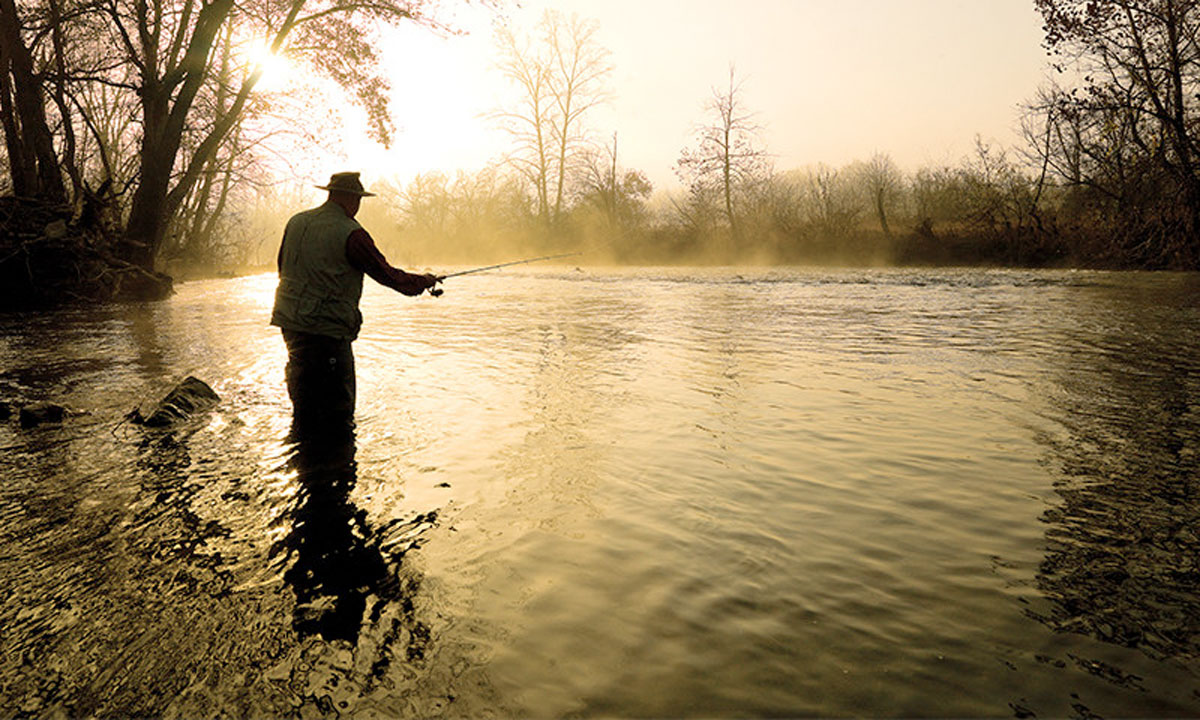During the past week, we have had rain (over three inches here in Cotter), cold temperatures and heavy winds. The lake level at Bull Shoals rose three and six tenths feet to rest at two tenths of a foot below power pool of 659 feet. This is thirty six and two tenths feet below the top of flood pool. Upstream, Table Rock Lake rose two feet to rest at two tenths of a foot below power pool and sixteen and two tenths feet below the top of flood pool. Beaver Lake rose two and three tenths feet to rest at two tenths of a foot below power pool or nine and five tenths feet below the top of flood pool. On the White, we have had significant wadable water. Norfork Lake rose two and nine tenths feet to rest at nine tenths of a foot over power pool of 553.75 feet and twenty five and three tenths feet below the top of flood pool. On the Norfork, we have had less wadable water.
The water level for the top of power pool has been reset higher for all of the lakes in the White River system. Most of the lakes in the White River system are below power pool. With the recent rains, we can expect more generation particularly on the Norfork.
The Catch and Release section below Bull Shoals Dam is closed from November 1, 2021 to January 31, 2022 to accommodate the brown trout spawn. The State Park will be seasonal Catch and Release for the same period. All brown trout must be immediately released. In addition, night fishing is prohibited in this area during this period. On February 1, 2022 this section will open to fishing.
On the White, the hot spot has been the Wildcat Shoals. On the low water, the bite was excellent! The hot flies were Y2Ks, prince nymphs, zebra midges (black with silver wire and silver bead or red with silver wire and silver bead), pheasant tails, copper Johns, pink and cerise San Juan worms, gold ribbed hare’s ears and sowbugs. Double fly nymph rigs have been very effective. Try a small bead headed nymph (zebra midge, copper John or pheasant tail) suspended eighteen inches below a brightly colored San Juan worm (hot fluorescent pink or cerise).
Crooked Creek and the Buffalo River are still navigable. With colder temperatures, the smallmouths are not active. The most effective fly has been a tan and brown Clouser minnow. Carefully check the water level before entering Crooked Creek or the Buffalo River. There are no dams on these streams. They both have large drainages and are prone to flooding during and following any rain event. The water can rise very quickly.
There has been some wadable water on the Norfork and it fished well some days and poorly on others. The most productive flies have been small midge patterns like zebra midges (black or red with silver wire and silver bead). Grasshoppers have produced fish, particularly when used in conjunction with a small nymph dropper (try a size 20 black zebra midge). Double fly nymph rigs have been very effective. Try a small bead headed nymph (zebra midge, copper John or pheasant tail) suspended eighteen inches below a brightly colored San Juan worm (hot fluorescent pink or cerise). The fishing is much better in the morning and late afternoon and tapers off midday.
Dry Run Creek has fished well. School is back in session and now is a great time to fish it, particularly during the week. Weekends can get a bit crowded. The hot flies have been sowbugs and various colored San Juan worms (worm brown, red, hot fluorescent pink and cerise). Small orange or peach eggs have been very effective. Be sure and carry a large net, as most fish are lost at the net.
The water level on the Spring River is fishable. This is a great place to wade fish, when they are running water on the White and Norfork Rivers. Canoe season is over and the canoes are mostly gone. Fish the upper river at the Lassiter Access to avoid them or fish Dam Three late in the afternoon, after they have left the area. Be sure to wear cleated boots and carry a wading staff. There is a lot of bedrock that can get very slick. The hot flies have been olive woolly buggers with a bit of flash, cerise and hot pink San Juan worms and Y2Ks.
Remember that the White and Norfork Rivers and Dry Run Creek are infected with didymo, an invasive alga. Be sure and thoroughly clean and dry your waders (especially the felt soles on wading boots) before using them in any other water. Many manufacturers are now making rubber soled wading boots that are easier to clean and are not as likely to harbor didymo.
John Berry is a fly fishing guide in Cotter, Arkansas and has fished these local streams for over thirty years. Contact him at 870-435-2169.



